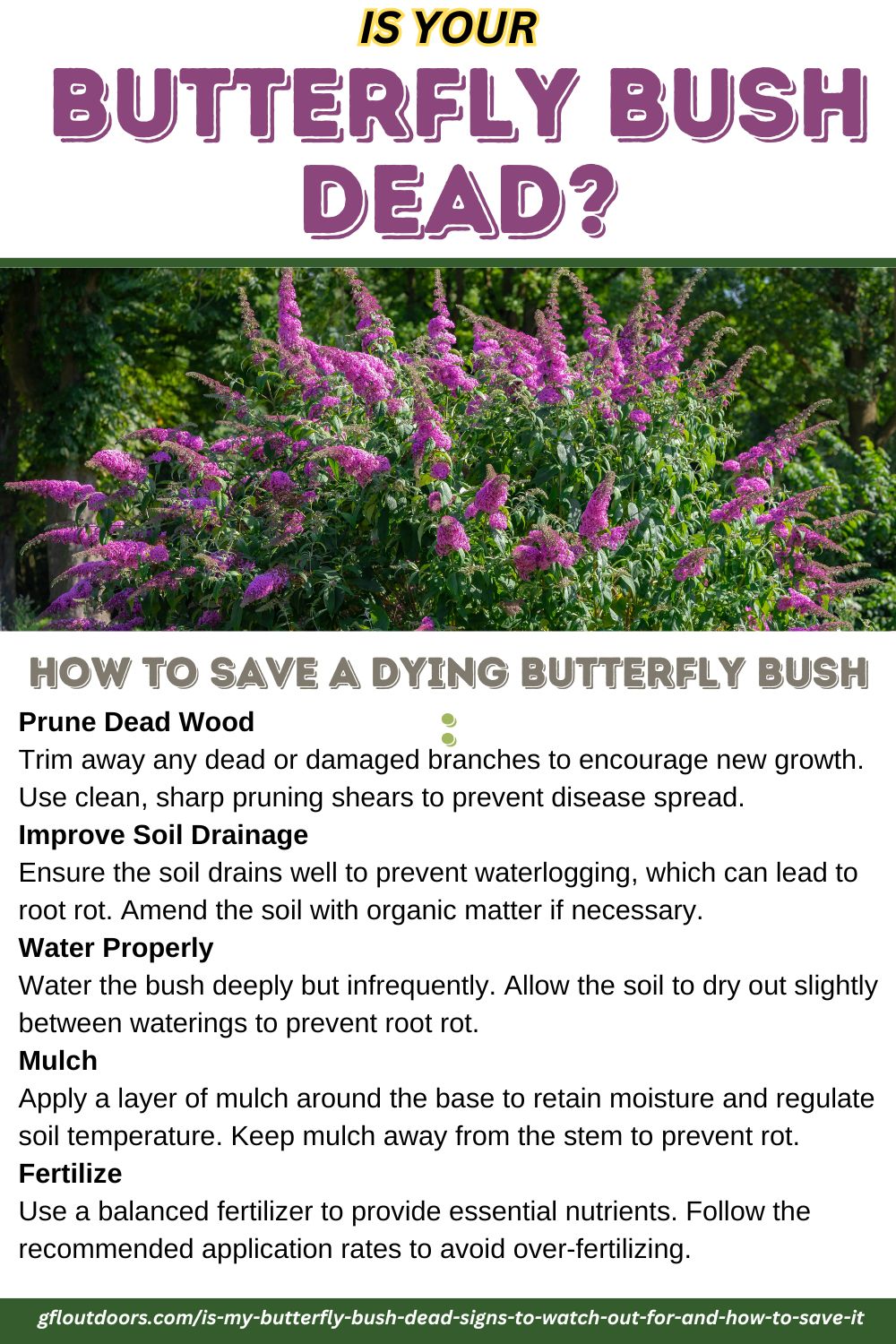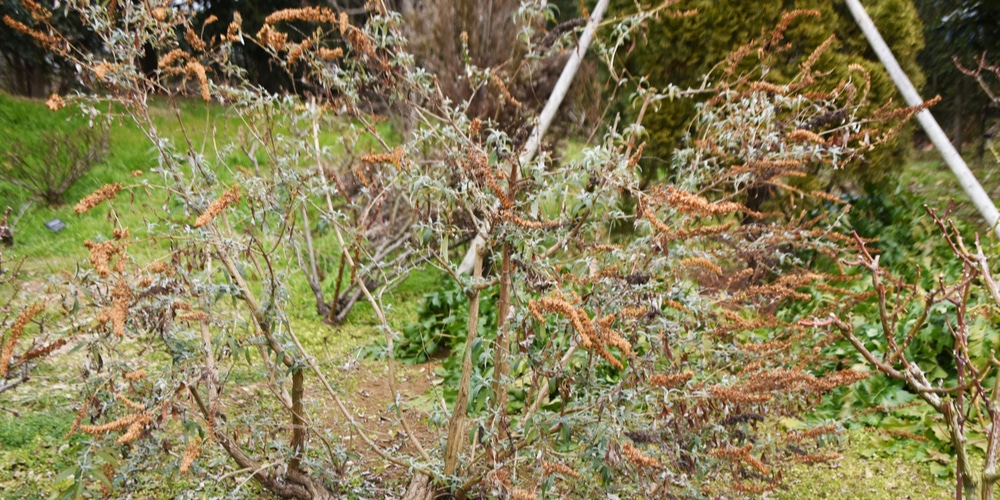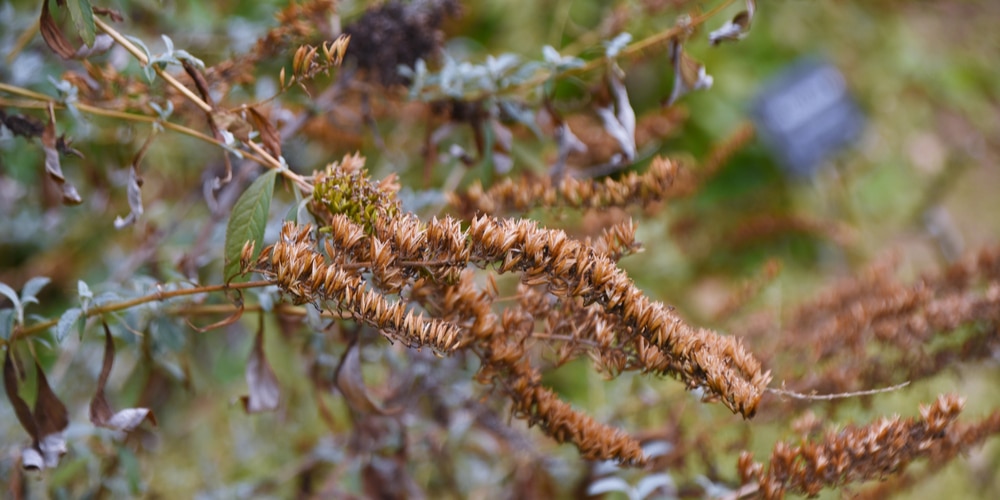
Have you noticed that your butterfly bush, which was once vibrant green with tall blooms of purple flowers, is now a sad, wilted mess?
The leaves have started to fall off, have turned yellow or there are no signs of life. Spring is one of the most exciting seasons, and there’s nothing more rewarding than seeing your plants come back to life after a long winter.
However, it can also bring troubles for gardeners when plants that were once thriving start to show signs of distress. So, what do you do if your butterfly bush is looking sickly? If you’ve constantly been wondering, “Is my butterfly bush dead?” then this post is for you!
The bush is considered a hardy perennial and is popular in gardens for its long blooming period, fast growth, and low maintenance needs. However, there may be times when your butterfly bush seems to die on you. What are the signs to look for? What can you do to save it?
Butterfly Bush – Dead or Dormant?
It’s worrying if your butterfly bush seems to have died overnight. The vibrant blooms that were attracting so many butterflies just yesterday are now wilted and brown, and the once-lush foliage is now dry and brittle.
However, before you go into panic mode, it’s important to determine if it is actually dead or just dormant and preparing for winter.
Here are some signs that your butterfly bush is about to enter dormancy:
The Leaves Start to Turn Yellow or Brown
One of the most beautiful sights in nature is a butterfly bush in full bloom. These bushes are covered in delicate flowers that attract all sorts of butterflies, making them a popular choice for gardeners.
However, every year, these bushes go through a period of dormancy. The leaves turn yellow or brown, and the flowers fade away, leaving the bush looking sad and neglected.
But don’t worry, this is perfectly normal! The bush is simply getting ready for winter. In a few months, it will burst back into life, more beautiful than ever. So, if you see your butterfly bush starting to enter dormancy, don’t be alarmed. It’s just nature’s way of telling you that winter is on its way.
The Leaves Fall Off
As the leaves turn yellow or brown, they’ll eventually fall off. Once all the leaves have dropped, the bush will enter a state of dormancy.
During this time, the plant will stop growing and will not need as much water. In fact, overwatering can be harmful during dormancy, so it’s important to let the soil dry out between watering.
During this time, the bush will not produce new leaves or flowers. Don’t worry – dormancy is essential for the health of the bush. By going through this process each year, the bush can rest and renew itself, emerging in spring with fresh growth.
The Bush Looks Wilted
When a plant is wilting, it means that the leaves are not getting enough water. This can be caused by a number of things, including drought, heat stress, or overwatering.
If you notice your butterfly bush starting to wilt, take a closer look at the soil. Is it dry? If so, the bush needs to be watered. If the soil is wet, it’s possible you’re overwatering the plant. In this case, let the soil dry out before watering again.
Once you’ve determined the cause of the wilting, take steps to correct it. If the bush is too dry, water it deeply and regularly until it recovers.
If you’re overwatering, cut back on watering and let the soil dry out between waterings. With a little care, your bush will soon look healthy and vibrant again.
When to Worry: Signs That Your Butterfly Bush Is Actually Dead
Although it’s normal for a butterfly bush to go through a period of dormancy in winter, there are some circumstances in which the plant may actually be dead.
It’s easy to get attached to your plants, but sometimes they don’t make it despite your best efforts. If you’re concerned that your butterfly bush may have met its untimely demise, there are a few key signs to look for.
The Bush Is Completely Dry
If the bush is completely dry – no leaves, no flowers, no green growth – then it’s likely that it has died. If you run your fingers along the stems of your butterfly bush and they come away bone dry, that’s a sign that the plant is no longer receiving water.
The leaves of the bush may also be dry and crispy to the touch. In some cases, you may even see them falling off the plant. If the bush is completely dry, it’s likely that it has already died and will not be able to be revived.
The Bush Is Growing Mold or Mildew
If you notice that your butterfly bush is growing mold or mildew, it’s a sign that the plant is dying. The mold will appear as white, fuzzy patches on the leaves or stems.
In some cases, the mold may also be accompanied by black streaks or spots. As the mold grows, it will suffocate the plant and prevent it from photosynthesizing. As a result, the leaves will turn yellow and then brown as they become dried out and brittle.
These fungi thrive in damp, shaded areas and can quickly spread over the surface of the soil, smothering any new growth. Mold and mildew also produce a musty odor that is often noticeable even before you see the telltale signs of fungal growth.
If you notice mold or mildew on your butterfly bush, it’s important to take action immediately. The sooner you remove the fungi, the better chance you have of saving your plant.
Mildew and mold can be removed with a fungicide, but it’s important to follow the directions carefully. If not used correctly, fungicides can harm the plant or make the problem worse. It’s also important to remove any dead leaves or debris from around the base of the plant, as this can provide a place for the fungi to grow.
Once you’ve removed the mold or mildew, take steps to improve air circulation around the plant. Prune back any overgrown branches and thin out the plant if it’s too dense. If possible, move the bush to a sunnier location. These measures will help to prevent the problem from recurring.
The Bush Has Soft, Brittle Stems
If the stems of your butterfly bush are soft and brittle, it’s a sign that the plant is dying. The stems may also be discolored or have black streaks running through them.
This is often caused by a fungal disease known as stem rot. Stem rot can be caused by overwatering, as the fungi thrive in damp conditions. It can also be caused by planting the bush too deeply, as this prevents air from circulating around the roots.
Once stem rot has set in, it’s challenging to treat. The best course of action is to remove any affected stems and dispose of them. You should also take steps to improve drainage around the plant and make sure that it’s not being overwatered or over fertilised. If the problem is severe, you may need to replant the bush in a new location.
Is My Butterfly Bush Dead?: Conclusion
Butterfly bushes are tough plants that can withstand a lot of abuse, but even they have their limits. If you notice any of these signs, it’s important to take action immediately.
With a little care and attention, you may be able to save your plant. But if the problem is severe, it’s best to start over with a new bush.
Related Article: Butterfly Bush Georgia: Growth and Care Guide
Last update on 2025-06-06 / Affiliate links / Images from Amazon Product Advertising API




